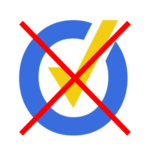 “Cheney wrongly claimed that the U.S. prosecuted Japanese soldiers ‘for a lot of stuff’ but ‘not for waterboarding.’ While they weren’t solely prosecuted for waterboarding, Japanese soldiers were prosecuted for torturing American prisoners, including the use of ‘water torture.'”
“Cheney wrongly claimed that the U.S. prosecuted Japanese soldiers ‘for a lot of stuff’ but ‘not for waterboarding.’ While they weren’t solely prosecuted for waterboarding, Japanese soldiers were prosecuted for torturing American prisoners, including the use of ‘water torture.'”
—Annenberg Fact Check Editor Eugene Kiely, from the FactCheck.org article “Cheney’s Tortured Facts”
Overview
Why pick solely on PolitiFact and the Washington Post Fact Checker over their poor handling of waterboarding? Editor Eugene Kiely of Annenberg Fact Check shows that even FactCheck.org struggles to report the issue accurately.
The Facts
FactCheck.org’s December 16, 2014 set of fact checks for former Vice president Dick Cheney focuses in part on Cheney’s denial that Japanese soldiers were prosecuted for waterboarding.
FactCheck.org, save for a minor edit, faithfully reproduces the relevant part the transcript from NBC’s Meet the Press:
CHUCK TODD:
When you say waterboarding is not torture, then why did we prosecute Japanese soldiers in World War II for waterboarding?
(OVERTALK)
DICK CHENEY:
For a lot of stuff. Not for waterboarding. They did an awful lot of other stuff[.] (T)o draw some kind of moral equivalent between waterboarding judged by our Justice Department not to be torture and what the Japanese did with the Bataan Death March and the slaughter of thousands of Americans, with the rape of Nanking and all of the other crimes they committed, that’s an outrage.
FactCheck.org’s Eugene Kiely spends a few paragraphs of his article fact-checking Cheney’s claim that Japanese soldiers were not prosecuted for waterboarding.
We will look at whether Kiely makes a convincing case showing Cheney wrong.
Analyzing the Rhetoric
Kiely’s fact check relies on equivocal language. FactCheck.org’s key to saying Cheney is wrong comes from assuming that the “water torture” prosecuted by the International War Crimes Tribunal was effectively the same thing as CIA waterboarding.
In fact, Kiely never even argues the two techniques are the same, even though his conclusion relies on that argument. Kiely simply says Japanese water torture was “akin to waterboarding,” as though that fuzzy relationship settles the issue.
Birds are akin to bats in that both are warm-blooded and known for an ability to fly. Yet birds are not bats.
Is the Japanese water torture the same as waterboarding?
Incredibly, Kiely provides his readers with no description of CIA waterboarding. Worse, the descriptions he provides of the Japanese water torture techniques differ in important ways from CIA waterboarding. For example:
“The so-called ‘water treatment’ was commonly applied” by the Japanese, according to an International Military Tribunal for the Far East report. “The victim was bound or otherwise secured in a prone position; and water was forced through his mouth and nostrils into his lungs and stomach until he lost consciousness.”
In contrast to the method described above, U.S. interrogators ensured that very little water could enter either the stomach or the lungs. Waterboarding, unlike the Japanese technique, works by stimulating a reflexive illusion of drowning and not by literally drowning the victim. The latter is what occurs when water is forced into a victim’s mouth and nostrils into his lungs and stomach until he loses consciousness. Waterboarding usually works in a matter of seconds and would not ordinarily result in unconsciousness.
Fact checkers like Kiely seem to routinely ignore that fact.
Kiely makes no case at all that waterboarding matches Japanese water torture. Moreover, he provides historical detail undermining the premise of NBC host Chuck Todd’s question. Is it proper to even say the Japanese were prosecuted for “water torture”? The Hague conventions under which the Japanese were prosecuted said prisoners “must be humanely treated.” We see no reason to accept the argument that every inhumane treatment equates with torture. Case law leading up to 1999, in fact, distinguished inhumane treatment from torture (bold emphasis added):
The same also applied in the 1995 case of Ribitsch v. Austria (blows leading to bruises on the inside and outside of the right arm). It should be noted that in both these cases applicants’ counsel had ‘only’ complained of ill-treatment. Again, in 1998, the Court found in Tekin v. Turkey, following the Commission’s ‘cautious’ findings of fact (‘the applicant had been kept in a cold and dark cell and blindfolded and treated in a way which left wounds and bruises on his body in connection with his interrogation’), that ‘the manner in which he must have been treated in order to leave wounds and bruises on his body, amounted to inhuman and degrading treatment.’ Evidently, the Court was maintaining its practice of considering serious beatings to be inhuman, but not torture.
Kiely relies on Judge Evan Wallach’s essay, “Drop by Drop: Forgetting the History of Water Torture in U.S. Courts.” But Wallach’s essay casually equivocates between techniques that vary considerably one from another.
Marc Thiessen, a former Bush administration official, gave a fine example of Wallach’s imprecision in his book “Courting Disaster”:
In a longer essay for the more obscure Columbia Journal of Transnational Law, Wallach provides more examples of testimony about waterboarding from the Japanese war crimes tribunals–all which make clear that what the Japanese did bears no resemblance to CIA practice. He writes: “Descriptions of water boarding as it is apparently currently applied differ very little from the techniques applied by the Japanese.” Then in the very next sentence he writes “One investigator describes waterboarding as a technique ‘… in which a prisoner is stripped, shackled, and submerged in water until he begins to lose consciousness.'”
In fact, no al Qaeda terrorist was ever “submerged in water until he begins to lose consciousness” by the CIA. Apparently Wallach is not familiar with waterboarding “as it is currently applied.”
Indeed, Wallach relied on dubious media descriptions for his definition of CIA “waterboarding.” Wallach relied on the journalists the journalists later relied on Wallach, leading to a cycle of misinformation.
Summary
The Japanese defendants were convicted of mistreating prisoners using with techniques different from waterboarding. When Kiely claims Cheney wrongly says the Japanese were not prosecuted for waterboarding, his argument relies on a fallacy of ambiguity. Differences between CIA waterboarding and the Japanese water treatment make the convictions of Japanese defendants almost useless in determining whether CIA waterboarding counts as torture.
Conclusion
“Cheney wrongly claimed that the U.S. prosecuted Japanese soldiers ‘for a lot of stuff’ but ‘not for waterboarding.'”
Cheney’s answer to Chuck Todd’s question rings true. If there’s a significant difference between CIA waterboarding and the Japanese water treatment then it is reasonable for Cheney to distinguish between one and the other. Kiely and FactCheck.org produced no legitimate evidence to show the equivalence of the two techniques. On the contrary, Kiely’s fact check relies on a journal essay that commits fallacies of equivocation and deserves its own fact check. Kiely’s fact check echoes the equivocation in that essay.
Reference material
Kiely, Eugene. “Cheney’s Tortured Facts.” FactCheck.org. FactCheck.org, 16 Dec. 2014. Web. 28 June 2016.
“Meet the Press Transcript – December 14, 2014.” NBC News. NBCNEWS.COM, 14 Dec. 2014. Web. 28 June 2016.
Wallach, Evan. “Drop by drop: Forgetting the history of water torture in US courts.” Colum. J. Transnat’l L. 45 (2006): 468. Web. Dec. 18, 2014.
Thiessen, Marc. “Courting Disaster.” Google Books. Google, n.d. Web. 24 June 2016.
White, Bryan W. “Waterboarding fact check: Kessler vs. Cheney.” Zebra Fact Check, 23 Dec. 2014. Web. 28 June 2016.
White, Bryan W. “Torture narrative trumps facts at PolitiFact.” Zebra Fact Check, 30 May 2016. Web. 28 June 2016.




